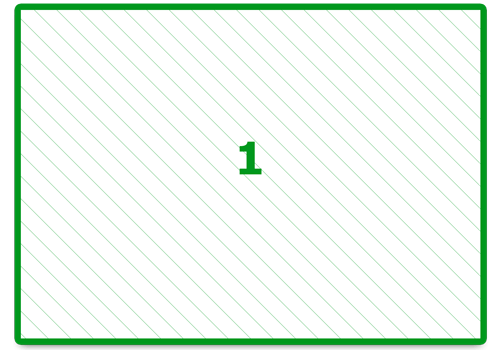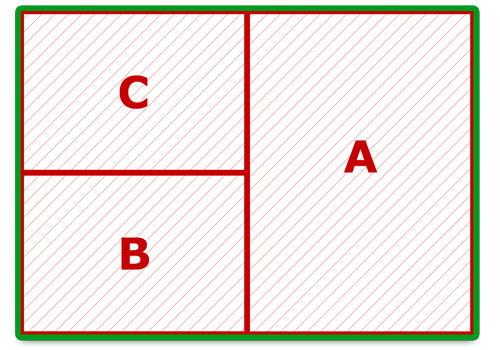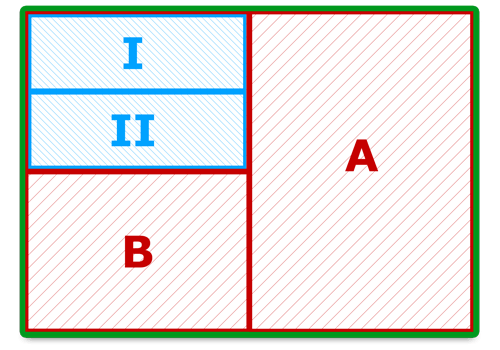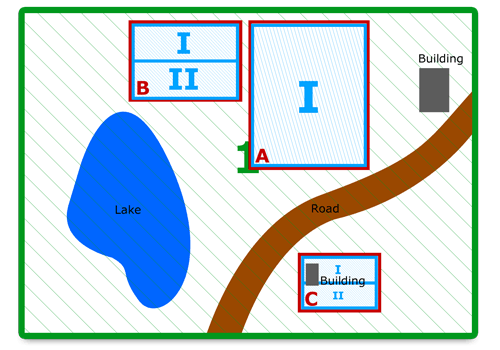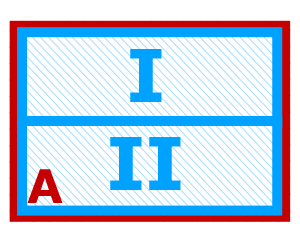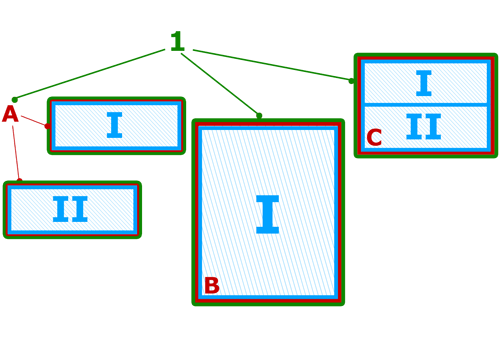| Home » Categories » LandMagic » General Overviews |
What are Land Areas, Blocks and Parcels? |
|
Article Number: 4 | Rating: Unrated | Last Updated: May 1, 2013 at 1:47 PM
|
What are Land Areas, Blocks and Parcels? Objectives
Overview LandMaster uses three basic building blocks to represent and structure your data. These three building blocks, Land Areas, Blocks and Parcels are used throughout LandMagic as the basis for many of its applications. These elements are structured in a three tier chain. Example: Land Area
Land Area is the highest element in the grouping/hierarchy, followed by Block and then by Parcel. When the master data is setup in LandMaster, it begins with the Land Area. A Land Area must exist before a Block and is also true that a Block must exist before a Parcel. Below we will discuss what these elements are and how they relate to each other. What is a Land Area? Land Area is a term native to LandMagic. A Land Area in LandMagic is equivalent to a Grove or Ranch, etc… The Land Area is the highest element in the three tier chain. It is the outermost border or largest grouping of a group of lands. Blocks and Parcels are contained within the Land Area. A Land Area can be any shape or size. For example purposes and for simplicity we have created a simple rectangle shaped Land Area seen below. Example 1: In this example we have one Land Area #1, depicted in green.
What is a Block? Blocks are second in the three tier chain, below Land Area. Blocks reside in the Land Area borders. Blocks are containers for Parcels. A Block can be any shape or size. For example purposes and for simplicity we have created three simple rectangle shaped blocks seen below. Example 2: In this example we have added three blocks, A, B and C inside the Land Area #1. A Land Area can contain any number of Blocks.
What is a Parcel? Parcels are third in the three tier chain, just below Block. Parcels reside in the Block borders. Parcels are used to separate different varieties or crops. A Parcel can be any shape or size. For example purposes and for simplicity we have created two simple rectangle shaped Parcels seen below. Example 3: In this example we have added two parcels, I and II inside the Block C. A Block can contain any number of Parcels.
How do Land Areas, Blocks & Parcels relate? Land Areas, Blocks and Parcels are used to manage your data in a hierarchical fashion. These elements are used to store certain properties and information about your land, crops, generations, etc… This information is stored within LandMaster under one of the data groups, Land Areas, Blocks and Parcels. The examples above have been simplified for example purposes. In the real world of farming, Land Areas, Blocks and Parcels do not necessarily fit together as nicely as depicted in examples 1, 2 and 3. Example 4: A Land Area may extend beyond the boundaries of its contained Blocks as seen below. In this mapping, Blocks A and B are separated from Block C by a road. Block C is located 2 miles away from Block A. LandMaster allows you to tie an address to the Land Area and Block Levels. A building located in the Land Area in the top right corner could have an address that would be entered at the Land Area level. The building located inside Block C could also have an address, but would be entered at the Block level. Addresses cannot be tied to the Parcel Level. As stated in “What is a Parcel”, a Block can contain any number of Parcels and they also can be any shape or size. Block B and C contain two parcels, I and II. Block A contains only one parcel, I . Because there is only one Parcel in Block A, it is possible that the Parcel takes up the entire Block space. It is very important however to realize that the defining structures and their purpose are different despite their one to one relationship physically.
Governing Boundaries Bound Association: This is an example of a bound association. The two Parcels I & II are bound by Block A’s boundaries. The Block has been split into two sections.
Unbound Association: Unbound associations occur when two Parcels are separated by space but are considered to be in the same Block. The two parcels, I & II are NOT bound within Block A’s boundaries in a typical sense as seen in the Bound Association. When unbound associations occur, an association is made between the Parcels and is labeled with the Block Name. The Parcel grouping then becomes the Block’s boundaries.
Example 5: This is an example of a bound association of a Land Area.
The unbound association occurs most frequent at the Land Area to Block relationship. Below is a depicted example of the Land Area to Block to Parcel chain relationship. Notice that the Land Area #1 is an unbound association. The Land Area is a collection of Blocks totaling the Land Area.
|
Attachments  There are no attachments for this article. |
Understanding LandMagic’s Application Filters
Added on Apr 30, 2013
Bill of Material (BOM) List
Added on Jul 29, 2013
|
| KB Home | Advanced Search | News | Glossary | Ask Question | Login |
|
| LandMagicKB |  |
|
|
|
